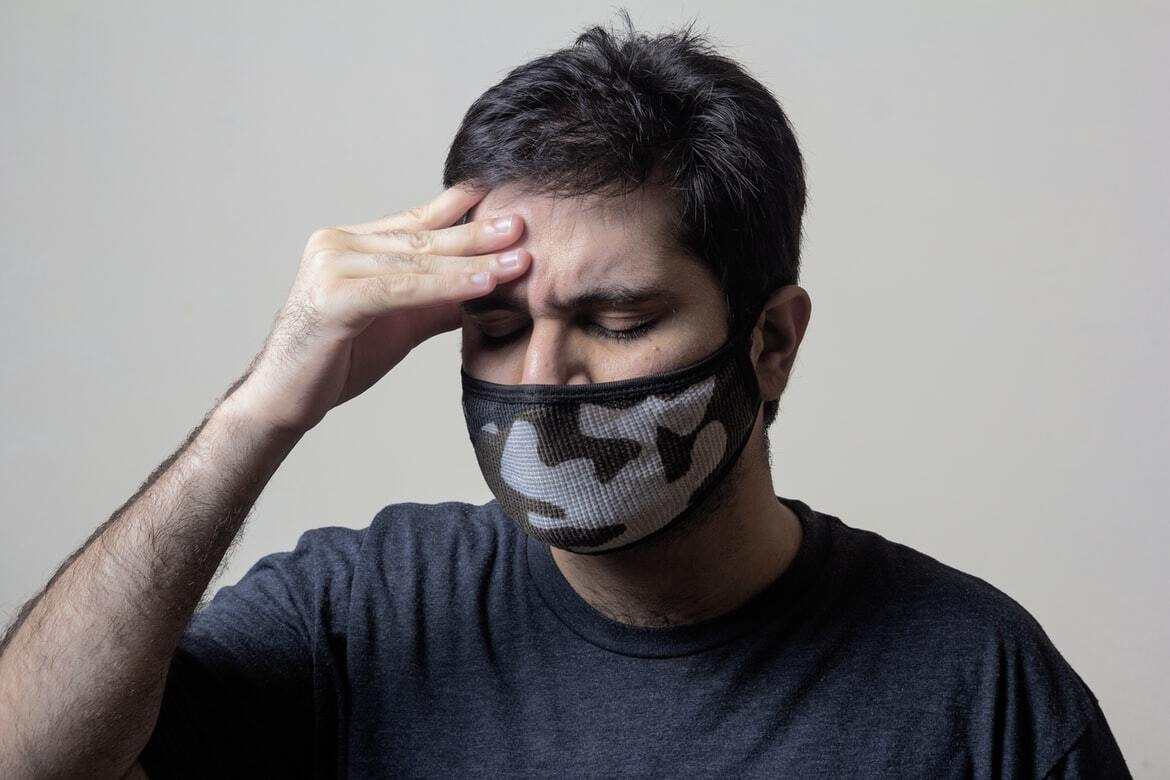Definition
Trigeminal neuralgia is a condition characterized by extremely sharp pain on one side of the face. The pain is intense and can recur. It lasts briefly from 1 second to 2 minutes and occurs in areas of the face innervated by the trigeminal nerve, namely the forehead, cheek, and lower jaw. This pain can appear spontaneously or after normal activities, causing sufferers to often experience stress and anxiety due to their condition. In trigeminal neuralgia, the pain symptoms experienced are usually not accompanied by signs of neurological deficits, such as a crooked mouth or limb weakness.
Trigeminal neuralgia affects more women than men, with a prevalence ratio of men to women of 1:1.5 – 1.7. Most cases occur in people over 50 years old, although this disease can also appear in the second and third decades of life.
Causes
The trigeminal nerve is the fifth cranial nerve, which has sensory functions for the face and motor functions for the jaw muscles.
Based on the cause, trigeminal neuralgia is classified as classical trigeminal neuralgia and secondary trigeminal neuralgia. In classical trigeminal neuralgia, most cases are thought to occur due to compression of the trigeminal nerve root. 80-90% of the causes of this nerve compression are arteries or veins adjacent to the trigeminal nerve. It is believed that due to the compression of the trigeminal nerve, over time, the myelin sheath of the nerve in the compression area is destroyed. Nerve signals passing through the damaged part of the nerve will activate pain sensations.
There is also the bio-resonance hypothesis, where when the vibration frequency of the trigeminal nerve and other tissue structures becomes close, the trigeminal nerve fibers will be damaged. This causes abnormal nerve signal transmission and leads to pain.
Secondary trigeminal neuralgia includes diseases other than nerve compression due to blood vessels. These secondary causes include tumors or cysts in the head area that compress the trigeminal nerve (meningioma, acoustic neuroma, epidermoid cyst), multiple sclerosis (MS), bone compression, cerebral aneurysm, or arteriovenous malformations.
Risk factor
Diseases such as multiple sclerosis are one of the risk factors for trigeminal neuralgia, found in 2-4% of patients. This disease is an autoimmune disease of the central nervous system characterized by chronic inflammation and destruction of the nerve sheath. This disease can occur in anyone, although it usually appears at ages 20-40 years. Usually, complaints in patients with multiple sclerosis are not only facial pain but can also be accompanied by vision disturbances, muscle weakness in one limb, dizziness, or coordination problems in body movements. In addition to multiple sclerosis, the presence of a tumor in the head area can also be a risk factor for trigeminal neuralgia.
Symptoms
Pain in trigeminal neuralgia is severe, sudden, and sharp like stabbing, burning, lightning strike, or electric shock. Usually, between two attack periods, the patient does not feel pain, and if there is pain, it is only mild. Pain can appear spontaneously or during normal activities such as brushing teeth, eating-drinking, talking, shaving, washing face, or even when exposed to cold air. Pain very rarely occurs during sleep.
The pain lasts briefly but can recur, with some patients reporting attack frequencies of more than 10 times a day. After the pain, there is usually several seconds or minutes without any attacks (refractory period). Sometimes, the pain can be accompanied by other symptoms such as watery eyes and nose on the same side of the face.
Research has found that the right side of the face is more often affected than the left. If pain is felt on both sides of the face simultaneously, it could be secondary trigeminal neuralgia caused by another disease. Since the pain is usually felt in areas of the face innervated by the trigeminal nerve, it is usually felt in the lips, chin, cheeks, forehead, and gums. Patients appear normal when not in pain. In physical examinations conducted throughout the body, usually, no neurological abnormalities are found. If abnormalities are found, it may indicate secondary trigeminal neuralgia, requiring further examination.
Patients can experience complete remission periods (periods where symptoms do not occur at all). These periods can last from several months to several years. It is suspected that this happens because the damaged nerve sheath is being rebuilt.
Diagnosis
Trigeminal neuralgia is usually diagnosed through a clear description of the symptoms by the patient and the patient's medical history. According to ICHD-3, the diagnostic criteria for trigeminal neuralgia are:
- Facial pain in the area innervated by the trigeminal nerve, occurring on one side of the face and recurring briefly. The pain meets criteria 2 and 3 below:
- The pain has the following characteristics:
- The pain lasts for one second to two minutes
- The pain is very severe and feels like stabbing, shooting, or electric shock
- The attack pattern is the same and unchanged
- Non-harmful stimuli such as touch or vibration can cause pain
- No other diagnosis can explain how the symptoms arise, such as dental disease or facial injury
If another disease is suspected as the secondary cause of the symptoms, patients will be recommended to undergo a head CT scan or brain MRI. MRI is more recommended for examining nerve compression, lesions, or tumors in the brain and surrounding tissues.
Management
Treatment options for patients usually depend on various factors, such as the severity of the disease, patient age, current health, and if another disease is found as the cause of trigeminal neuralgia.
In trigeminal neuralgia patients, treatment ranges from prescription medications to neurosurgery. Pharmacological therapy is the first treatment given to patients, usually starting with anticonvulsant medications that can be gradually increased in dosage. The increase in dosage stops if the patient's pain is relieved or side effects begin to appear. In addition to anticonvulsants, patients are usually also given vitamin B12 to improve nerve health. In elderly patients who cannot tolerate the side effects of medications, botulinum toxin injections can be given to relieve pain symptoms.
If medication therapy does not yield the expected results, another disease is suspected as the cause of the pain, or a lesion is found in the head area from imaging examinations, the patient will be referred to a neurosurgeon. Besides surgical procedures, there are also radiosurgery procedures that use ionizing radiation to target the trigeminal nerve root and ablation procedures, which involve injecting chemicals into the trigeminal nerve or compressing the target nerve fibers with a small balloon.
Complications
Pain symptoms in trigeminal neuralgia are very severe and often recur. Patients can become very stressed and fearful of the return of symptoms. If not properly managed, this can lead to depression.
Additionally, the therapy provided also has its side effects. Long-term anticonvulsant therapy can cause side effects. Surgical procedures can cause complications ranging from pain, mild nerve disturbances, cerebrospinal fluid leakage, hearing loss, cerebellar hematoma, stroke, and death, although the last two are very rare. Radiosurgery procedures also have complications such as tingling and loss of sensation in the face.
Prevention
Drug therapy as a preventive measure has little research evidence, so it is not recommended. So far, it is not known what can be done to prevent the occurrence of trigeminal neuralgia. You can only avoid activities that trigger pain, such as eating soft and warm foods, washing your face with warm water (not too hot or too cold), and brushing your teeth gently with a soft toothbrush.
When to see a doctor?
Patients are advised to see a doctor immediately if they experience repeated pain on one side of the face that is very painful. After receiving treatment, patients can keep a journal to monitor their pain condition and the effectiveness of the therapy on the pain experienced.
Looking for more information about other diseases? Click here!
- dr. Yuliana Inosensia
Standford Health Care. How We Can Help You for Trigeminal Neuralgia. Available from: https://stanfordhealthcare.org/medical-conditions/brain-and-nerves/trigeminal-neuralgia/prevention.html
PERDOSSI (2016). Panduan Praktik Klinis Neurologi. Available from: http://snars.web.id/ppkneurologi/ppkneurologi.pdf
Maarbjerg S, Stefano G, Bendtsen S (2017). Trigeminal neuralgia - diagnosis and treatment. International Headache Society. Available from: https://journals.sagepub.com/doi/full/10.1177/0333102416687280
Kikkeri N, Nagalli S (2021). Trigeminal Neuralgia. NCBI Statpearls. Available from: https://www.ncbi.nlm.nih.gov/books/NBK554486/
Lambru G (2021). Trigeminal neuralgia: a practical guide. BMJ Journals. Available from: https://pn.bmj.com/content/21/5/392












